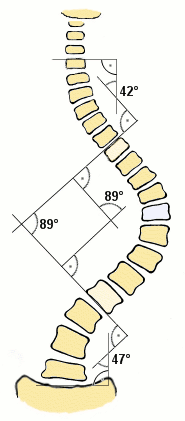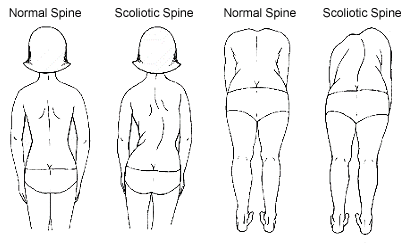Scoliosis in simple words
What do you know about scoliosis?
- Scoliosis is a condition of side-to-side spinal curves. On an x-ray, the spine of a person with scoliosis looks
more like an “S” or a “C” than a straight line. These curves can make the person’s shoulders, hips or waist
appear uneven. In scoliosis, the spine’s vertebrae may also be rotated, causing one shoulder blade or trunk
muscles to be more prominent than the other.
- Scoliosis affects 2-3 percent of the population, or an estimated 6 to 10 million people in the United States.
Scoliosis can develop in infancy or early childhood. However, the primary age of onset for scoliosis is 10-15
years old. Females are eight times more likely to progress to a curve magnitude that requires treatment.
- Every year, an estimated 30,000 children are fitted with a brace and 38,000 patients undergo spinal fusion surgery*
* Source: National Scoliosis Foundation
- In more than 80 percent of scoliosis cases, a specific cause is not known. Such cases are termed
idiopathic (meaning of undetermined cause), and they are most commonly found in adolescent girls.
- Infantile idiopathic scoliosis is found in children ages 0 to 3.
- Juvenile idiopathic scoliosis is found in children ages 4 to 10.
- Adolescent idiopathic scoliosis is found in adolescents ages 11 to 18.
- Adult idiopathic scoliosis is found in patients older than 18.
Do I have scoliosis?
- By performing a physical examination, we can detect if you have scoliosis.
- If scoliosis is suspected following this examination, we will usually order X-rays of the entire spine from the
neck to the pelvis (back and side views).
- If scoliosis is present, we will measure the spine’s curves and provide you with a number, in degrees, to help
describe the scoliosis.
- Once the presence of scoliosis is confirmed, we will discuss treatment options with you.
Existing state of California law requires that all female students in grade seven (7) and all male students in grade eight (8) be given scoliosis screening
Treatment options may include:
- Routine monitoring of the curvature (and in some case, physical therapy) as long as it remains minimal;
- Wearing a brace to try to stop the curve(s) from progressing;
- Surgery for patients with major curves causing discomfort or other health problems.
Remember
"Early diagnosis, results in simple treatment"





